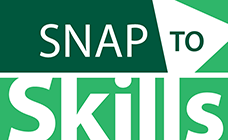SNAP E&T Then...And Now
Massachusetts’s Department of Transitional Assistance (DTA) recently presented at a meeting of several U.S. Department of Agriculture Food and Nutrition Service (USDA-FNS) regional offices on the development of the State’s Supplemental Nutrition Assistance Program (SNAP) Employment and Training (E&T) program called SNAP Path to Work. Their presentation was titled “That was Then, This is Now” to highlight its remarkable progress. The State’s vision for its voluntary SNAP E&T program is to “mak[e] work the better option for clients by creating incentives and supports that move individuals and families to meaningful employment which leads to career pathways and long-term economic self-sufficiency.”
Between 2011 and 2015, Massachusetts’s SNAP E&T 50/50 reimbursements to providers had dramatically decreased to one-third of its peak level in 2011. This was the result of two key factors, a cumbersome manual participant intake/enrollment process, and a monthly per participant cap on participant reimbursements. Now, as part of its work with SNAP to Skills, Massachusetts has streamlined its intake/enrollment process for providers and eliminated the cap on reimbursements. As a result of these key changes, the State’s SNAP E&T program budget has trended up during 2016 and 2017 and the number of third-party partners providing SNAP E&T services (44 current partners) continues to rise.
In addition, Massachusetts developed a new brand, SNAP Path to Work, a new website for the program that allows current and prospective participants to connect to resources as well as directly to provider partners in their area, and new marketing materials designed to improve participant outreach. The State is now working on building its program further by implementing a rolling recruitment process for new providers throughout the year, developing a network of partners to share best practices and assist with on-boarding new providers, and increasing collaboration with Career Centers.
Massachusetts is also focused on creating a new SNAP E&T online eligibility system that will allow providers to check the eligibility status of potential participants, enroll and track participants, and request reimbursements. This will significantly streamline and improve enrollment and financial processes for both the State and providers. In addition, Massachusetts is focused on expanding the program to new areas in the State (Western Massachusetts, the South Shore, and Cape Cod) and adding additional community college third-party partners. The State added its first third-party community college partner in April 2017.


